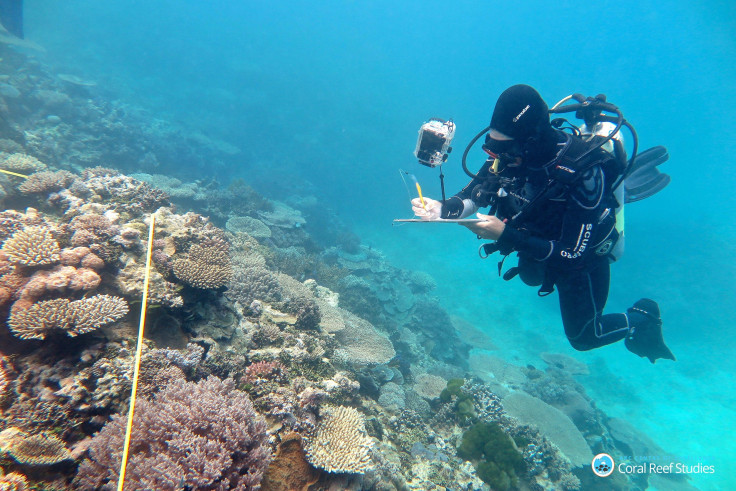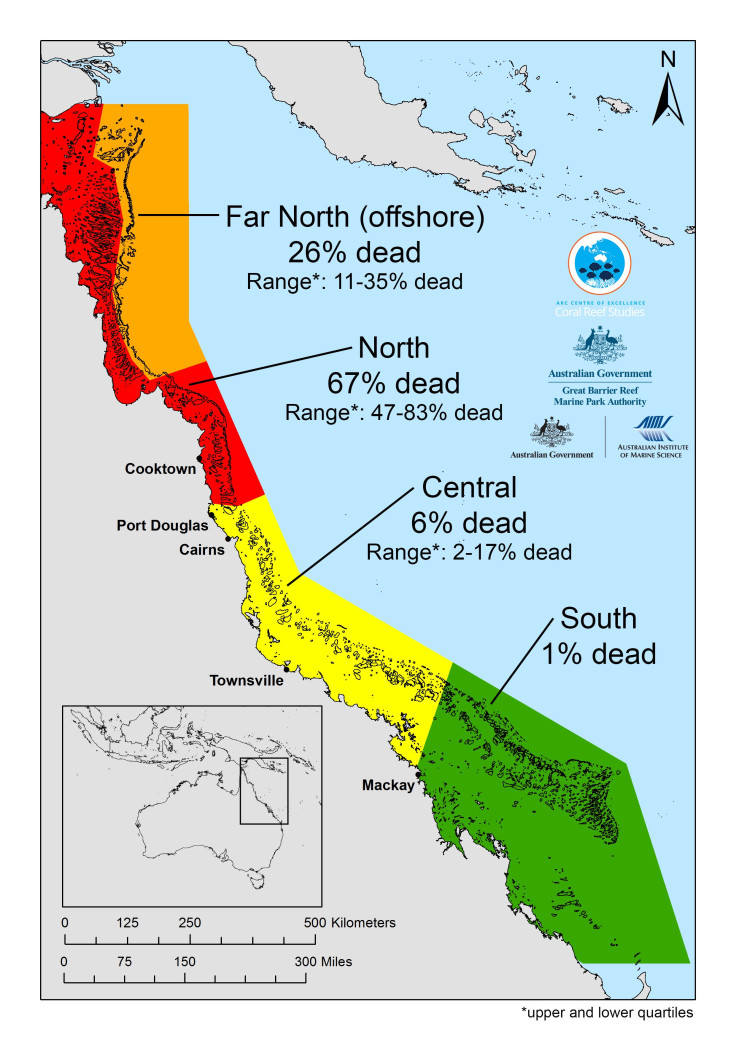Great Barrier Reef Dying, Suffering Worst Coral Bleaching Ever Recorded

Hot waters in 2016 contributed to the largest die-off of corals ever recorded on Australia’s Great Barrier Reef, researchers announced.
The most impacted zone stretches 700 kilometers (about 435 miles) of the northern area of the Great Barrier Reef, scientists say. That region lost an average of 67 percent of its shallow-water corals in less than a year.
“Most of the losses in 2016 have occurred in the northern, most-pristine part of the Great Barrier Reef. This region escaped with minor damage in two earlier bleaching events in 1998 and 2002, but this time around it has been badly affected,” Professor Terry Hughes, Director of the Australian Research Council (ARC) Centre of Excellence for Coral Reef Studies based at James Cook University, said in a release.
What is Coral Bleaching?
Coral bleaching occurs when water temperatures rise, causing the corals to expel the algae zooxanthellae, which then turns the coral to turn entirely white.
But not all is lost, as areas south to the most affected zones were had a lower death toll. The central part had an average of 6 percent of bleached coral deaths, and the south lost 1 percent.
Scientists released a map which points out the most affected areas:

Researchers say the unharmed area is good news for the tourism industry, which employs 70,000 workers and is worth $5 billion a year.
“The patchiness of the bleaching means that we can still provide our customers with a world-class coral reef experience by taking them to reefs that are still in top condition,” said Craig Stephen, who manages one of the Great Barrier Reef’s tourist operations.
Researchers pointed out another “silver lining” in the northern offshore corner of the Great Barrier Reef Marine Park. The loss of coral there was less than the other northern reefs.
“We found a large corridor of reefs that escaped the most severe damage along the eastern edge of the continental shelf in the far north of the Great Barrier Reef,” says Hughes. “We suspect these reefs are partially protected from heat stress by upwelling of cooler water from the Coral Sea.”
The northern region can recover the dead corals, but it will take at least 10 to 15 years. However, researchers are worried that another bleaching event could take place sooner and disrupt the reef’s sluggish recovery.
© Copyright IBTimes 2025. All rights reserved.




















